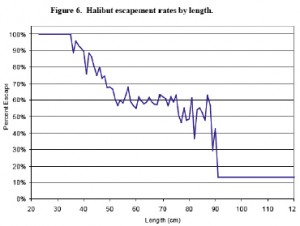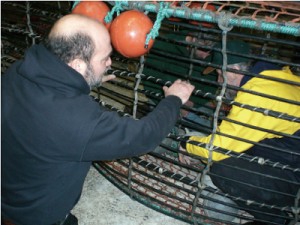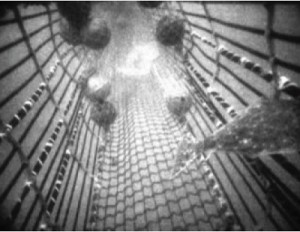The Development of Halibut Excluders to Reduce Bycatch in the Gulf of Alaska Cod Fisheries
SUMMARY
Project Details: The Development of Halibut Excluders to Reduce Bycatch in the Gulf of Alaska Cod Fisheries
| To reduce halibut bycatch in the Gulf of Alaska trawl fisheries, Alaska Whitefish Trawlers Association member vessels and the Alaska Groundfish Databank developed this project in cooperation with Dr. Craig Rose of the Alaska Fisheries Science Center and John Gauvin of the Marine Conservation Alliance Foundation.
To reduce halibut bycatch, the participants in this project focused on modifying the fishing gear to be more selective between cod and halibut. By redesigning the gear to discriminate between the relatively large thickness of the head of Pacific cod relative to the smaller thickness and flatter head and body shape of halibut, the experimental tows were able to reduce halibut bycatch by more than 50%. The concept for these halibut excluders is different from sorting grids commonly used in Bering Sea flatfish fisheries. In the Bering Sea, excluders for flatfish divert them up (or occasionally down). For the GOA cod fishery, the concept was to induce halibut to escape out the sides of the net while retaining the cod. The sides are used in lieu of the top or bottom based on expectations of where the halibut will find the best chance of escaping. Gulf fishermen also felt that the length of the excluder section should be greater than what was done in the Bering Sea. For the Bering Sea cod fishery, the section with the escapement slots had extended over a distance of approximately 4-5 meters. In considering how the device might work in the Gulf cod fishery, fishermen were interested in increasing the surface area fitted with the rectangular slots. To Gulf fishermen, this might be more workable and less problematic than pulling the sides of the net together as had been done in the Bering Sea.. To accommodate the approach preferred by Gulf fishermen, it was decided that the length of the excluder would be nearly doubled to approximately 8 meters. This would provide nearly twice the number of slots for escapement relative to the Bering Sea version of the excluder. |

To evaluate the gear modifications, two vessels towed side by side for nearly a month. One vessel used traditional gear and one vessel used modified gear. To address the potential for vessel-specific effects, the testing incorporated a requirement to switch the modified gear between the vessels at regular intervals. The results were significant. The excluder reduced halibut bycatch by 57% by weight. The effects across various sizes of halibut are shown in the graph above. The data collected at the trip level for catches of cod shows that the trips for vessels with the excluder had 35% less cod (by weight) on average than trips that fished with the unmodified net, so there is some sacrifice in efficiency that the fleet must incur to avoid halibut. Finally, catch of rock sole, the principal flatfish component of the groundfish fishery, was 83% less by weight. This confirms the expectation that rocksole escapement would occur at the highest rate given its smaller size and its flat body shape. For more information on this project, see “Final Report on EFP 06-03 to Develop a Halibut Excluder for the Gulf of Alaska Shoreside Cod Trawl Fishery”, available at:
|


